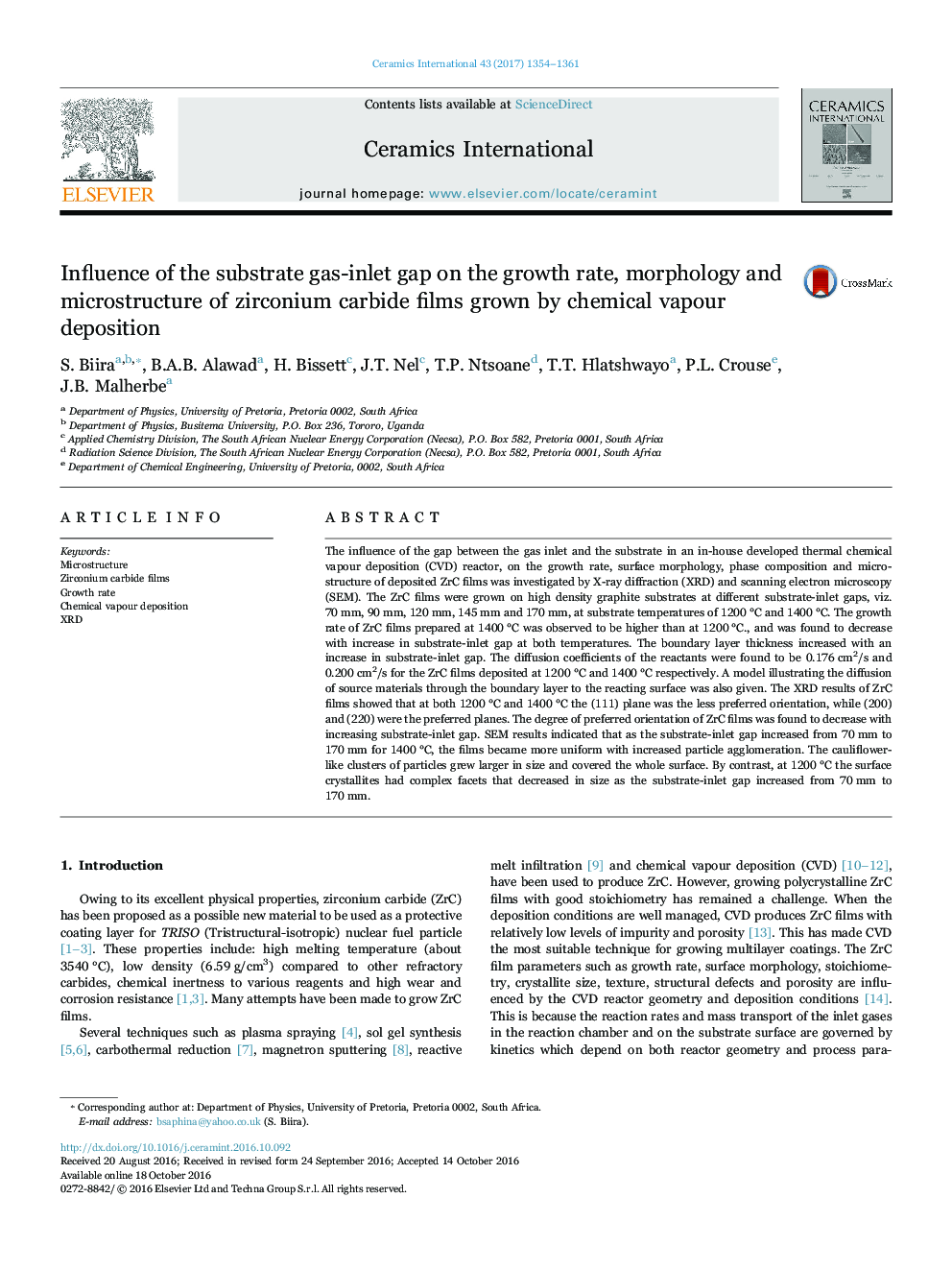| کد مقاله | کد نشریه | سال انتشار | مقاله انگلیسی | نسخه تمام متن |
|---|---|---|---|---|
| 5439209 | 1398192 | 2017 | 8 صفحه PDF | دانلود رایگان |
عنوان انگلیسی مقاله ISI
Influence of the substrate gas-inlet gap on the growth rate, morphology and microstructure of zirconium carbide films grown by chemical vapour deposition
ترجمه فارسی عنوان
تأثیر شکاف ورودی سوبسترا بر سرعت رشد، مورفولوژی و ریز ساختار فیلم های کاربید زیرکونیوم رشد شده توسط رسوب بخار شیمیایی
دانلود مقاله + سفارش ترجمه
دانلود مقاله ISI انگلیسی
رایگان برای ایرانیان
کلمات کلیدی
موضوعات مرتبط
مهندسی و علوم پایه
مهندسی مواد
سرامیک و کامپوزیت
چکیده انگلیسی
The influence of the gap between the gas inlet and the substrate in an in-house developed thermal chemical vapour deposition (CVD) reactor, on the growth rate, surface morphology, phase composition and microstructure of deposited ZrC films was investigated by X-ray diffraction (XRD) and scanning electron microscopy (SEM). The ZrC films were grown on high density graphite substrates at different substrate-inlet gaps, viz. 70 mm, 90 mm, 120 mm, 145 mm and 170 mm, at substrate temperatures of 1200 °C and 1400 °C. The growth rate of ZrC films prepared at 1400 °C was observed to be higher than at 1200 °C., and was found to decrease with increase in substrate-inlet gap at both temperatures. The boundary layer thickness increased with an increase in substrate-inlet gap. The diffusion coefficients of the reactants were found to be 0.176 cm2/s and 0.200 cm2/s for the ZrC films deposited at 1200 °C and 1400 °C respectively. A model illustrating the diffusion of source materials through the boundary layer to the reacting surface was also given. The XRD results of ZrC films showed that at both 1200 °C and 1400 °C the (111) plane was the less preferred orientation, while (200) and (220) were the preferred planes. The degree of preferred orientation of ZrC films was found to decrease with increasing substrate-inlet gap. SEM results indicated that as the substrate-inlet gap increased from 70 mm to 170 mm for 1400 °C, the films became more uniform with increased particle agglomeration. The cauliflower-like clusters of particles grew larger in size and covered the whole surface. By contrast, at 1200 °C the surface crystallites had complex facets that decreased in size as the substrate-inlet gap increased from 70 mm to 170 mm.
ناشر
Database: Elsevier - ScienceDirect (ساینس دایرکت)
Journal: Ceramics International - Volume 43, Issue 1, Part B, January 2017, Pages 1354-1361
Journal: Ceramics International - Volume 43, Issue 1, Part B, January 2017, Pages 1354-1361
نویسندگان
S. Biira, B.A.B. Alawad, H. Bissett, J.T. Nel, T.P. Ntsoane, T.T. Hlatshwayo, P.L. Crouse, J.B. Malherbe,
